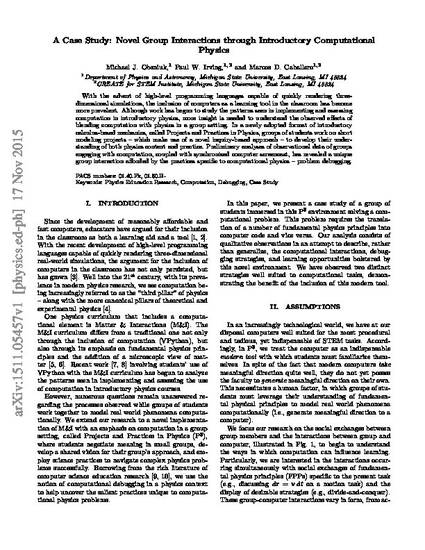
Article
A Case Study: Novel Group Interactions through Introductory Computational Physics
Physics Education Research Conference 2015
(2015)
Abstract
With the advent of high-level programming languages capable of quickly rendering three-dimensional simulations, the inclusion of computers as a learning tool in the classroom has become more prevalent. Although work has begun to study the patterns seen in implementing and assessing computation in introductory physics, more insight is needed to understand the observed effects of blending computation with physics in a group setting. In a newly adopted format of introductory calculus-based mechanics, called Projects and Practices in Physics, groups of students work on short modeling projects -- which make use of a novel inquiry-based approach -- to develop their understanding of both physics content and practice. Preliminary analyses of observational data of groups engaging with computation, coupled with synchronized computer screencast, has revealed a unique group interaction afforded by the practices specific to computational physics -- problem debugging.
Disciplines
Publication Date
November 17, 2015
DOI
DOI: 10.1119/perc.2015.pr.055
Citation Information
Michael Obsniuk, Paul W. Irving and Marcos D. Caballero. "A Case Study: Novel Group Interactions through Introductory Computational Physics" Physics Education Research Conference 2015 (2015) Available at: http://works.bepress.com/michael-obsniuk/4/
